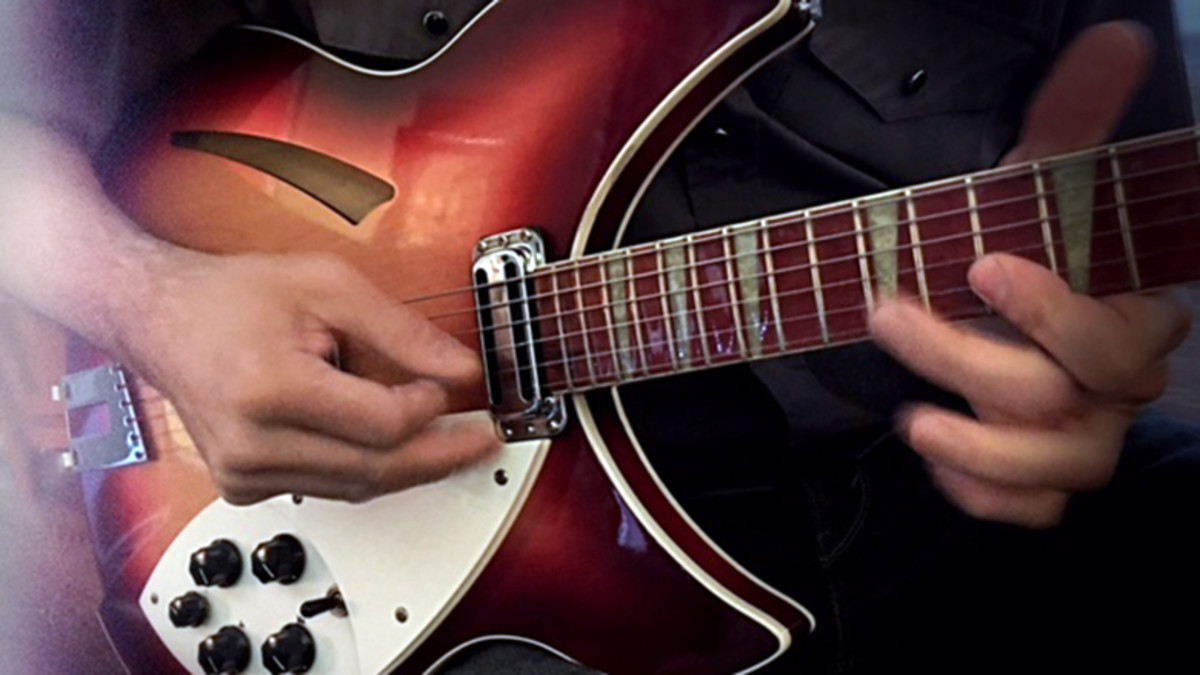
Many of my students are interested in learning how to play over changes in the way that jazz musicians do. On that note, here's a lesson on exploring the right chord tones to play over changes, and how to bring out the sound of each chord in a progression in your solos.
Before we get started, I recommend that you become familiar with the most common chords in contemporary music. I have included a list of 4 common triads, and 13 common seventh chords and their spellings at the end of this lesson.
1. Identify the chord tones of each chord in the progression you are playing over. In tertian harmony (chords built in 3rds), the chord tones of each chord will for the most part be the root, and some form of 3rd, 5th, and 7th derived from the major scale that corresponds with the root of the chord. Therefore, the best way to learn how to spell chords is to practice identifying roots, 3rds, 5ths, and 7ths in all 12 keys quickly, and memorize any alterations to the 3rd, 5th, and 7th scale degrees needed to produce a particular chord.
For example, lets say we wanted to spell a Cm7 chord. The root, 3rd, 5th, and 7th from a C major scale are C, E, G, and B. The degrees of a minor7 chord are root, b3, 5, and b7. Thus, the notes for a Cm7 chord would be C, Eb, G, and Bb.
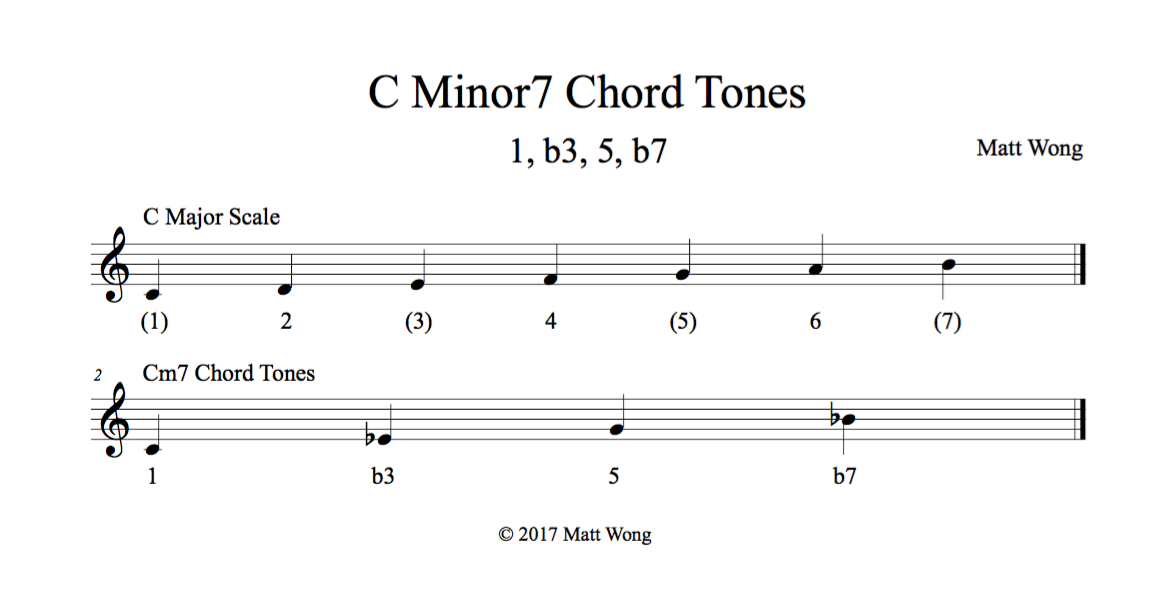
2. Practice each chord in the progression as an arpeggio starting from every chord tone. Below is what you should practice for a Cm7 chord. I recommend practicing the arpeggios with a metronome, and playing along to a drone of the root to improve your time, and work on your ear training.
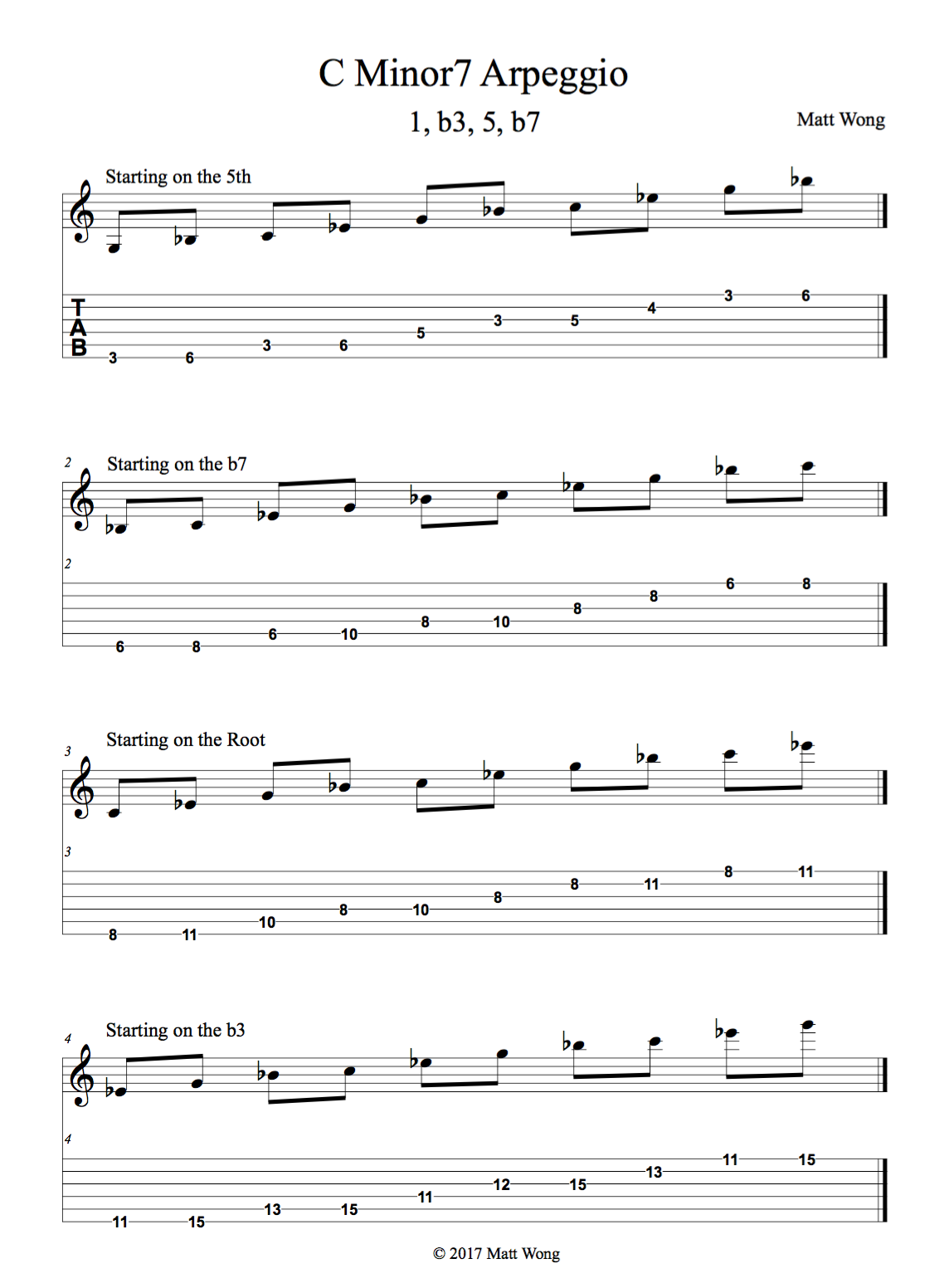
By practicing arpeggios like this, we are treating the guitar neck as one whole unit rather than a couple of positions and thus gain a better command of the fretboard.
3. Play through the progression with arpeggios, and link the arpeggios together. Now that you can play each chord individually as an arpeggio, play through the entire progression as arpeggios in time (record a loop of the progression, and play along to it). However, instead of starting on the root every time you arrive at a new chord, move to the closest chord tone of the new chord from the previous chord. Here is an example of this exercise over a II V I progression in Bb.

By "linking" the arpeggios together, we make playing this exercise more practical and musical. Try this exercise starting on different chord tones, and from different parts of the neck.
4. Improvise over the progression with only chord tones. Now you have the tools to begin "playing the changes." Although you are restricted in your note choice (for now), you can still create beautiful improvised music with just chord tones. Here is a transcription of a chord tone solo I took over a II V I progression in Bb.
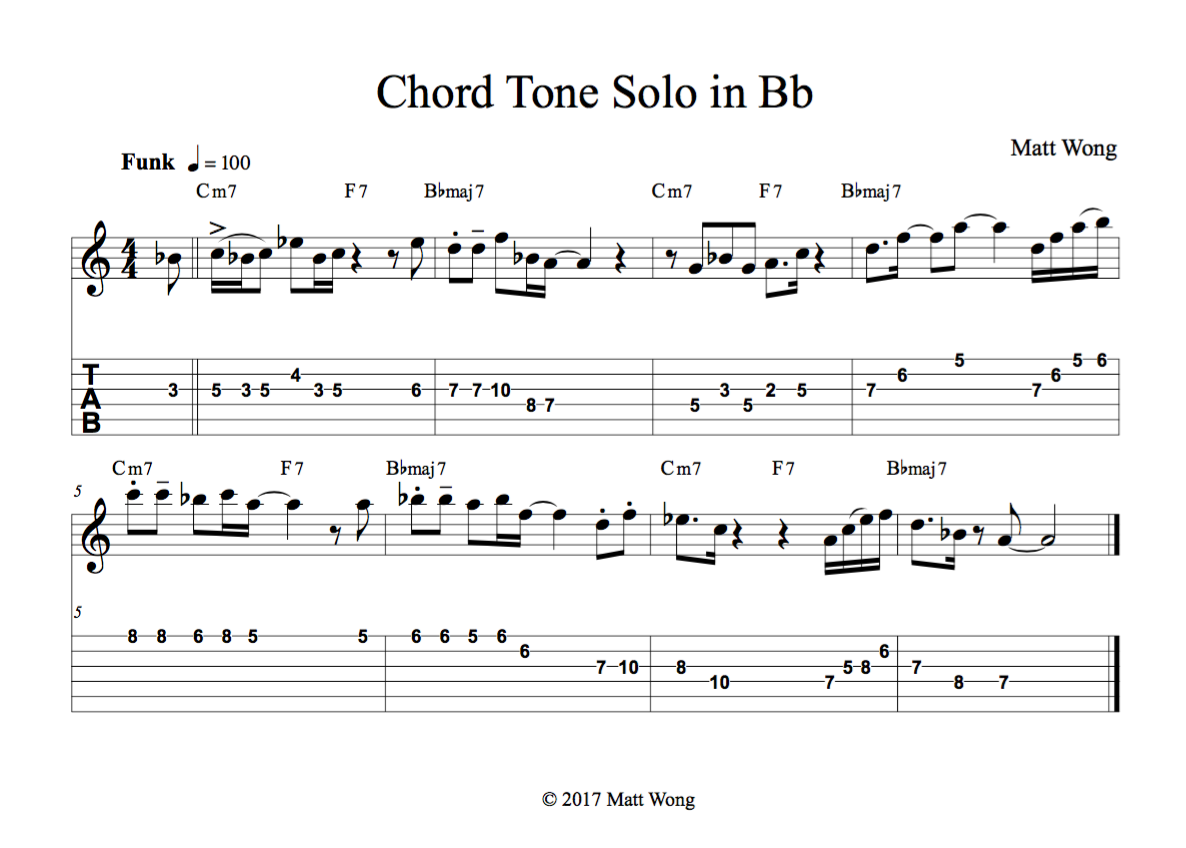
- Here are a few things to keep in mind to make your chord tone soloing sound as musical as possible.
- - Don't feel like you need to use every chord tone available on each chord of the progression. You can say a lot with just 2 or 3 different notes, and you can repeat notes.
- - Space is your friend! Don't play continuously. Leave rests in between your phrases to allow your listener to digest what you just played. Experiment with leaving different lengths of rest.
- - Vary where you start your phrases. Don't start all your phrases on beat 1 of a measure. Try starting on beat 2, or leading into the next measure from beat 4.
- - Vary your rhythms. Using interesting rhythms is a good way to draw in your listeners. Listen to your favorite improvisers, and transcribe a few rhythms you like from one of their solos, then incorporate these rhythms into your solos.
Common Chords in Contemporary Music:
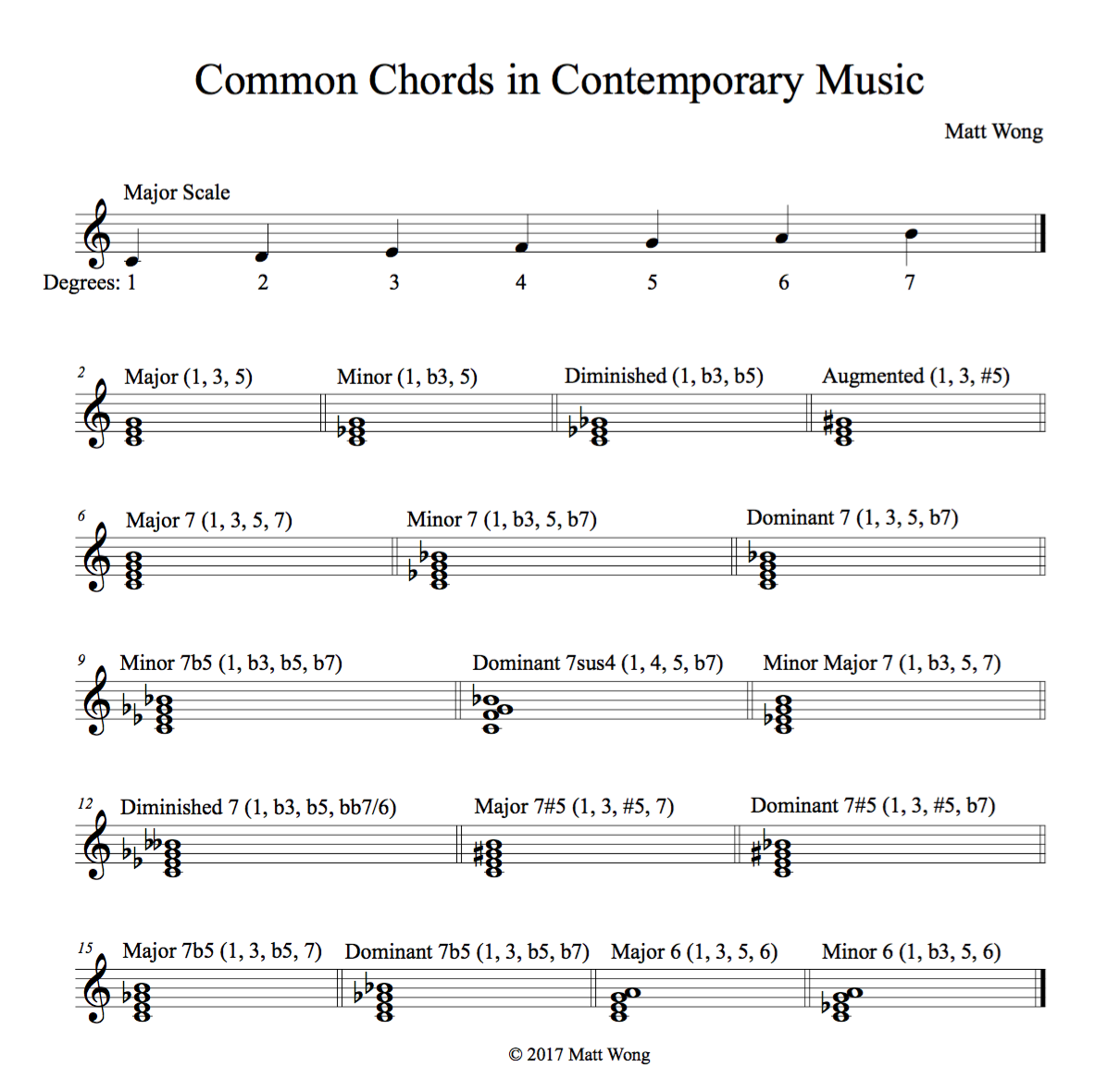
Chord Workbook for Guitar Volume One
Music Theory Workbook for Guitar Volume One
Matt Wong is a guitarist, composer, and producer from New Jersey. A big fan of musical theatre, Matt plays in pit orchestras for productions in New York City as well as regionally. In addition, Matt is a session musician, and has recorded guitar, mandolin, and banjo for artists in the US, and abroad (UK, Canada, Spain, and Israel). As an instructor, Matt teaches guitar, music theory, ear training, and improvisation, and offers lessons online via Skype. Follow Matt on Instagram (@mattwongguitar).
Get The Pick Newsletter
All the latest guitar news, interviews, lessons, reviews, deals and more, direct to your inbox!










